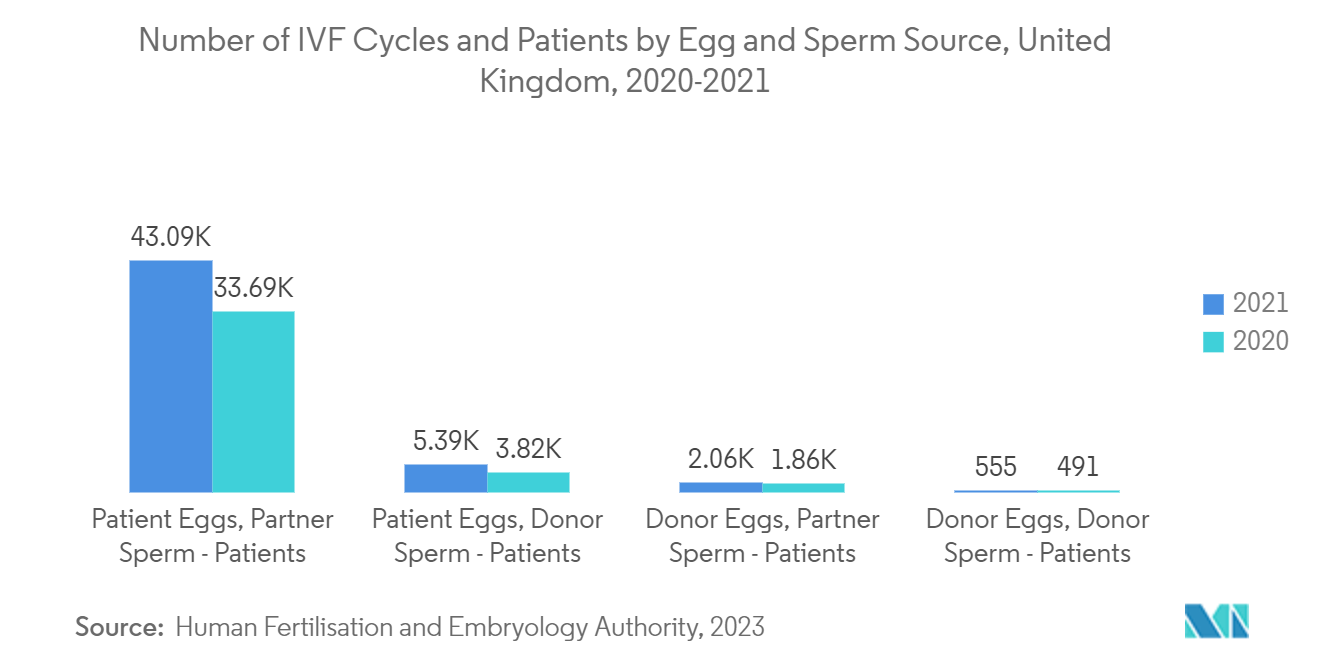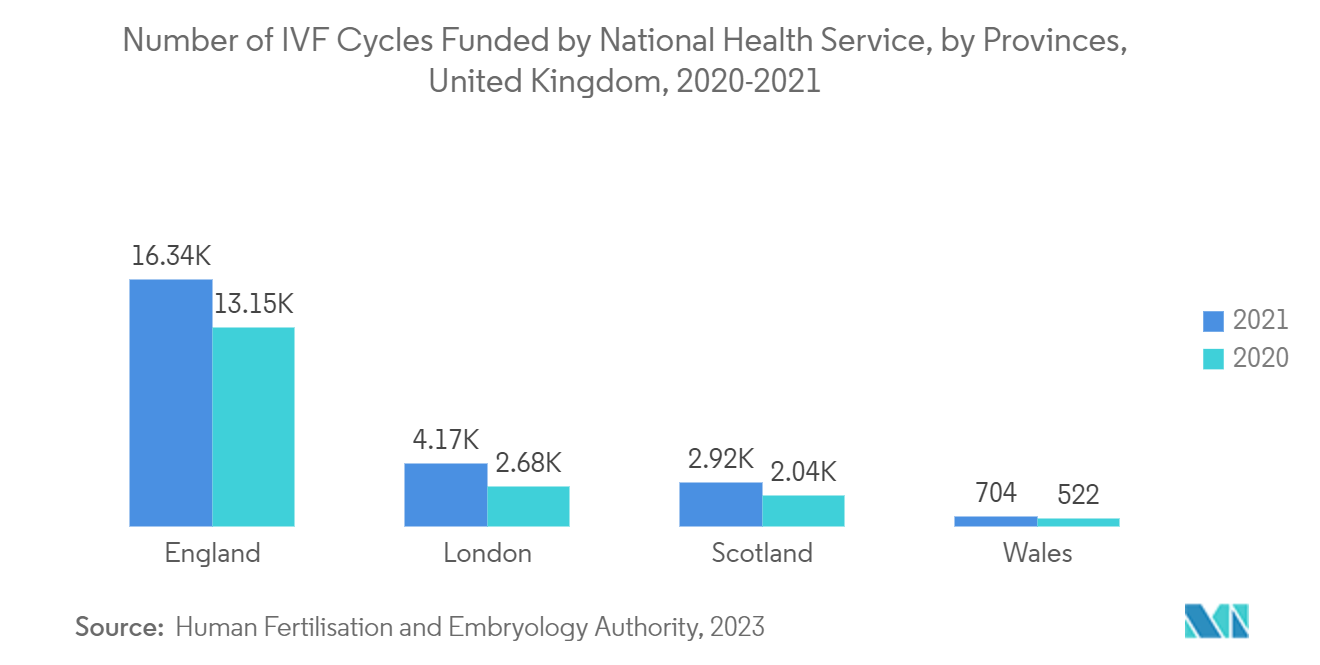Market Trends of UK In Vitro Fertilization Industry
The Sperm Separation Systems Segment is Expected to Show Significant Growth During the Forecast Period
- Sperm separation systems are specialized medical devices or techniques used to separate sperm cells from other components of semen for various purposes, such as fertility treatments or reproductive technologies. These systems are designed to isolate high-quality sperm cells with optimal motility, morphology, and genetic characteristics. The separated sperm can then be used for various IVF techniques, such as conventional IVF, intracytoplasmic sperm injection (ICSI), or other advanced procedures, to improve the chances of successful fertilization and embryo development.
- The major factor driving the segment growth in the country includes the adoption of advanced sperm separation instruments in the country for the separation of sperm cells coupled with the growing adoption of IVF treatments. For instance, Care Fertility, one of the largest private fertility clinics in the United Kingdom, adopted Zymot for sperm separation. The introduction of innovative technologies like Zymot in the field of sperm separation systems is expected to drive the growth of the segment in the United Kingdom's IVF market. Zymot, a novel sperm selection device, offers potential benefits such as improved sperm quality, higher fertilization rates, and enhanced embryo development. These advantages can increase success rates in IVF procedures, attracting patients and fertility clinics to adopt this advanced sperm separation system.
- Patients seeking IVF treatments are increasingly aware of these advancements and may choose clinics or providers that offer state-of-the-art technologies like Zymot. The adoption of such advanced systems also stimulates competition among fertility clinics, prompting them to invest in infrastructure upgrades and offer the latest technologies to attract patients and stay ahead in the market. This overall trend is expected to fuel the growth of the sperm separation systems segment in the country during the forecast period.
- Furthermore, various companies present in the United Kingdom are starting to offer fertility benefits to their employees, which is projected to drive the demand for sperm separation systems in the country during the forecast period. For instance, according to an article published by Fertility First UK in February 2022, companies like Virgin Group are financially supporting IVF and other assisted fertility procedures like sperm separation systems in the nation.
- As per the same source, in the United Kingdom, other companies like NatWest, Centrica, Clifford Chance, and Cooley have also started offering similar fertility treatment benefits, with some providing up to GBP 45,000 (USD 57,808.4) towards medical bills. Therefore, with more companies embracing fertility benefits, it is likely to drive growth in the United Kingdom's In Vitro Fertilization (IVF) market by increasing access to funding for fertility treatments, which is projected to lead to higher demand for IVF and related services.

Fertility Clinics Segment is Expected to Hold the Significant Share of the Market During the Forecast Period
- Fertility clinics, also known as reproductive clinics or assisted reproductive technology (ART) clinics, are specialized healthcare facilities offering a range of fertility and reproductive health services. These clinics provide diagnosis, treatment, and support for individuals and couples experiencing difficulties in conceiving or having reproductive concerns.
- The factors driving the growth of the fertility clinics segment in the country include increasing demand for assisted reproductive technologies, advancements in reproductive technologies, and supportive government policies. For instance, according to the data published by the Human Fertilization & Embryology Authority (HFEA) in November 2021, there were around 103 fertility clinics licensed by the HFEA in the United Kingdom during 2020-2021 offering IVF treatment.
- As per the same source, there were 16 establishments licensed in the country during 2020-2021 to undertake research involving human embryos. Hence, the presence of a significant number of licensed fertility clinics, particularly privately owned ones, in the country enhances accessibility and fosters competition among clinics, driving growth in the fertility clinics segment.
- Furthermore, the decrease in the fertility rate in the country is also expected to drive segment growth during the forecast period. For instance, according to the article published by the University of Oxford in June 2023, the total fertility rate fell from 1.94 in 2010 to 1.55 in 2021 in the United Kingdom. Thus, as the fertility rate declines, more individuals and couples may face difficulties conceiving naturally, leading them to seek assistance from fertility centers. The demand for fertility treatments, including IVF and other assisted reproductive technologies, is likely to increase as a result.
- Fertility centers would be positioned to cater to this growing demand, leading to the expansion of their services, adoption of advanced technologies, and potentially attracting more investments and partnerships. Thus, a decrease in the fertility rate can drive the growth of fertility centers by responding to the population's rising need for fertility treatments, in turn driving the growth of the segment during the forecast period.


